Textile Masterpieces
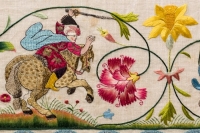
The Abegg museum in Riggisberg, Switzerand enjoys a worldwide fame among the connoisseurs of textile treasures. It houses the private collection of Werner Abegg and presents changing exhibitions annually.
In the museum collections there are quite a bit of textiles and works of applied art from the famous private collections of the 19th and early 20th century. The current exhibition "Collectors’ Delights - art objects and textiles from the historic private collections" presents a selection of such works of art. The information of the following collectors such as Albert Figdor, Marczll von Nemes, Alfred Pringsheim or Edmond de Rothschild is presented in words and pictures.
Dr. Michael Peter is a curator at the Abegg Museum and talked to i-teria about the Abegg Foundation, and fascination of the new special exhibition of textiles.
Dr. Peter, what are you mostly fascinated about in textiles?
On the one hand, it is an ancient medium that surrounds mankind since the immemorial time. On the other hand, I am interested in the combination of artistic and technical aspects. Really, we can reconstruct the whole loom from a tiny piece of cloth. It's like an ancestor of the computer. Lifting and lowering correspond to the binary system of zeros and ones. Node bundles and patterns are one of the earliest media. They could be transferred to other looms. As for the artistic side, it is the ornament. It takes up nearly half of the textile art and has been sadly neglected by the art history.
Does a textile renovator regard a textile item otherwise at the beginning?
Of course, being a renovator you watch everything more closely. Which bundle is used? Is the ornament woven or printed? For example, the company name is woven on a tie, it’s an evidence of its quality, which you will especially appreciate.
What is the most difficult to renovate in the textile sector?
Everything has its own challenges. For example, archaeological finds! They must be laboriously cleaned with mini vacuum cleaners. Water must not be used because colours would thereby be lost. Mold is very difficult to eliminate. First we define a method, which is the best to use working with a textile. At first, however, we should get to know what hazardous materials are there in the material. Our work is similar in such cases to an intensive care unit at the hospital where the staff wear hoods, masks, and gowns. Renovations are also extremely tedious. For example, if a piece of cloth, consisting of over 100 individual parts, is to be reassembled.
Do you still buy textiles?
As for the textile part of the collection, yes. The collection of craft objects that were owned by Werner Abegg will not be completed. We try to complete the textile collection by means of targeted acquisitions at auctions and with matching pieces from art galleries.
What are your favorite items of the current exhibition "Collectors’ Delights"?
Personally, I find the most fascinating story behind the objects from the collection of Pringsheim. They have a great history. Alfred Pringsheim was the son of Thomas Mann and had a large collection of gilded silver dishes of the 16th and 17th century, characterized by intricately engraved and chased decorations. In 1938 the Gestapo seized totally 96 precious goldsmith works and included them to the collection of the Bavarian National Museum. Several years after the end of the World War II they were returned to the collector’s heirs. This was the reason why in 1953 the precious objects were exported to the United States and sold there at an art auction. In 1956 and 1960 the Abeggs bought five dishes displayed for sale in New York. The rest is distributed today all over the world.
What are you currently working on?
I am working on the catalogue of medieval velvets. The Foundation has a large number of them from Italy and the Ottoman Empire. They should be published.
What distinguishes the collector Werner Abegg?
He was interested in the fabric itself. Not for costumes or fashions. His collection combines technical mastery in all directions and sometimes - as it should be in antique items - partly in the smallest fragments. The items of his collection date not later than 1800. We hold high the tradition and restrict ourselves to textiles made not later than this time. For us, it is also exciting because, for example, manual labour was used then to set up a jacquard loom.
Collectors’ Delights - the art objects and textiles from historic private collections
Until November 10, 2013, daily 14.00 - 17.30, in Riggisberg close to Bern
Author: F.S.
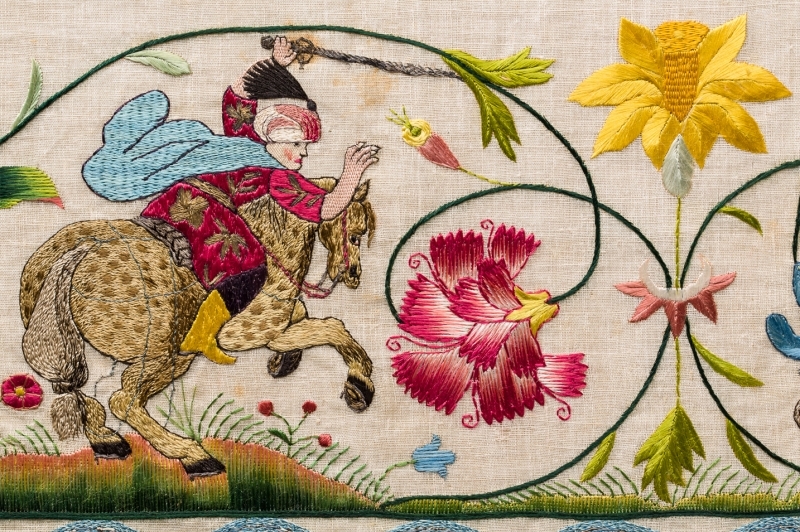
Detail of embroidery made in silk thread on the flax fabric. The galloping horseman with a drawn sword is a part of the ornament, which is embroidered together with small hunting scenes from different continents and curving tendrils. There is a sewn ribbon with a textile collection inventory number of the Swiss textile industrialist Iklé Leopold (1838-1922) at a corner of the cloth, © Abegg-Stiftung, CH -3132 Riggisberg (Photo: Christoph von Virag)
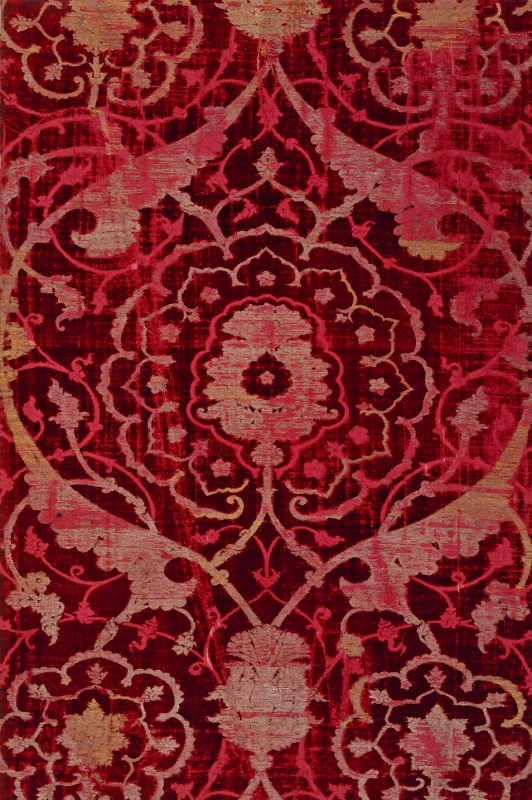
Thanks to its generous pattern repeat and the long golden velvet lancet leaves this could have originated from the Ottoman Empire under the influence of Italian patterns on textile. Werner Abegg bought the fabric in 1931 from a Venetian art dealer Adolfo Loewi, © Abegg-Stiftung, CH -3132 Riggisberg (Photo: Christoph von Virag).
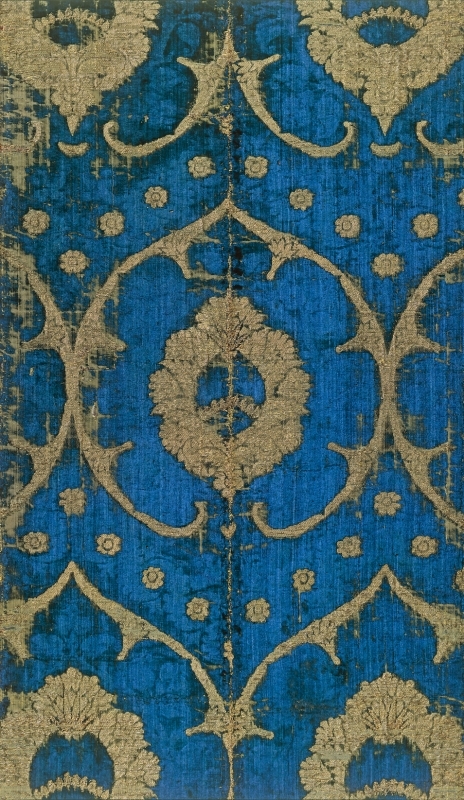
Before Werner Abegg bought the bright blue velvet decorated with embroidery in 1931, the fabric had belonged to two prominent collectors in the late 19th century: the first was Albert Figdor from Vienna (1843-1927) and the second was a noble Hungarian Marczell von Nemes who lived in Munich (1866-1930), © Abegg-Stiftung, CH -3132 Riggisberg (Photo: Christoph von Virag)
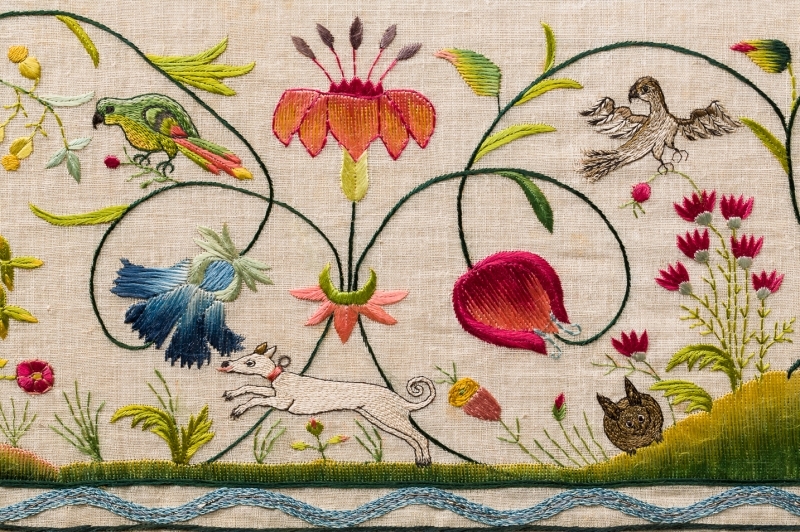
Detail of embroidery made in silk thread on the flax fabric, Central Europe, the 17th century. The animals and flowers are distributed with playful ease along the edges of a large cloth. The curving tendrils connect the scenes. The fine and fanciful embroidered cloth appeared in 2005 as a gift at the Abegg Foundation, © Abegg-Stiftung, CH -3132 Riggisberg (Photo: Christoph von Virag).
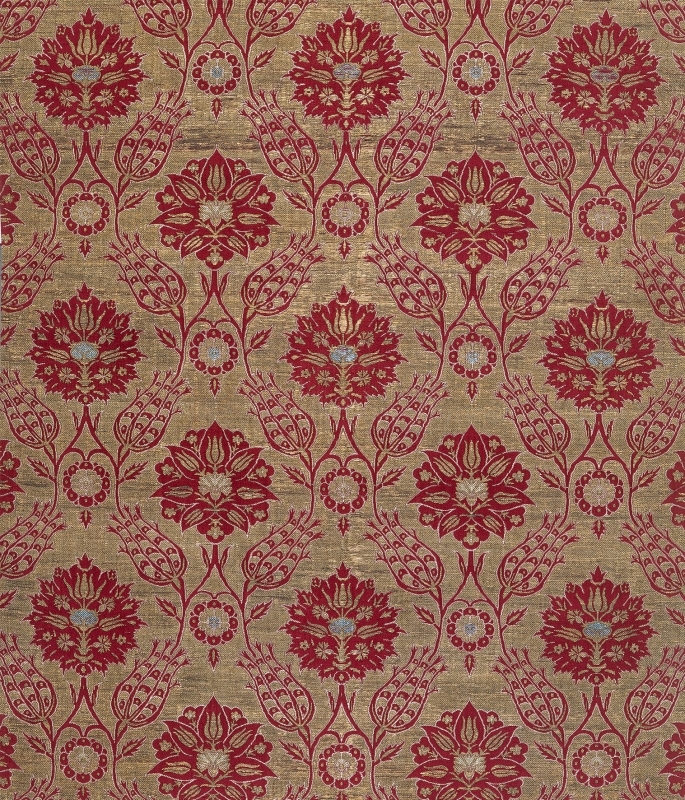
The silk fabric was once in the collection of Baron Edmond de Rothschild (1845-1934) and was bought by the Abegg Foundation in 1980 at the English art auction. Its filigree patterns with tulips and floral motifs appear in front of the fine drawing originally made on the bright golden background, © Abegg-Stiftung, CH -3132 Riggisberg (Photo: Christoph von Virag)
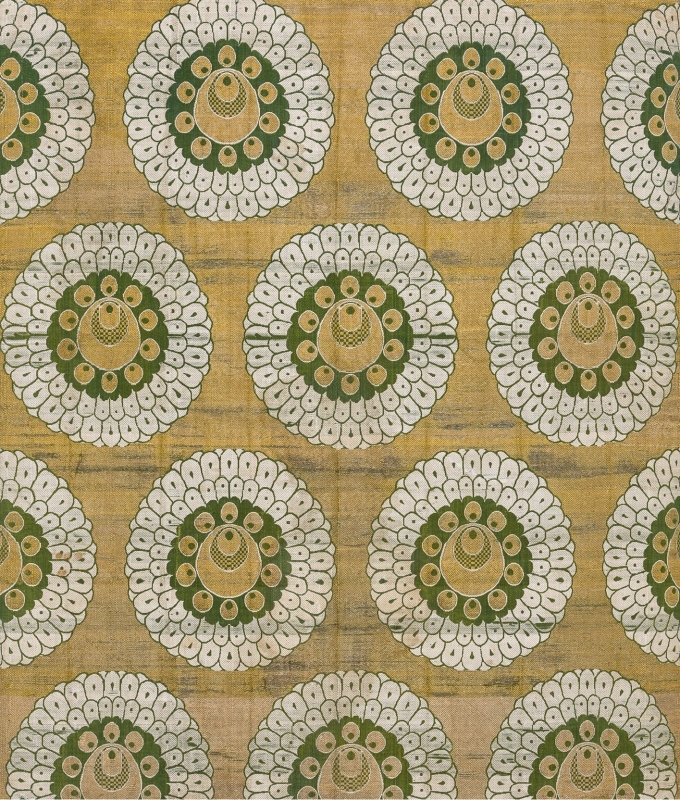
This silk fabric from the Ottoman Empire was bought by the Abegg Foundation at the English art auction in 2012. It once belonged to the collector Besselièvre Louis (1862-1914), the owner of a French fabric printing factory, and is already represented in a collection catalog of 1914. Its fascinating pattern of medallions with crescent motif is very rare, © Abegg-Stiftung, CH -3132 Riggisberg (Photo: Christoph von Virag)
Based on the materials of http://www.i-teria.com
